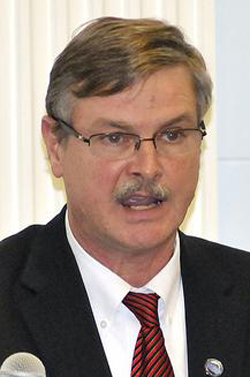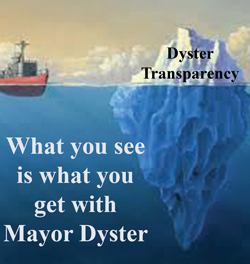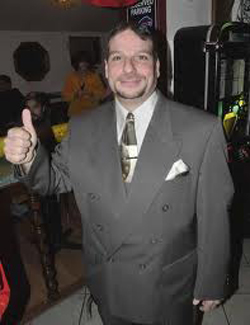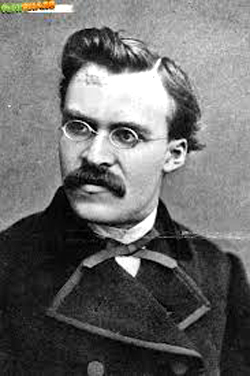Dyster Bid for Handout Rejected By Council
By Mike Hudson
They're ba-ack!
The Niagara Falls City Council rejected a $4,000 stipend for Mayor Paul Dyster donated by an anonymous cabal of Buffalo business interests and laundered through the Community Foundation of Greater Buffalo, in what amounts to a replay of the Building a Better Niagara fund debacle that marred his first year in office.
The mayor says he needs the money to pay for his membership dues in something called the Great Lakes and St. Lawrence Cities Initiative, an organization he has been a member of for several years, despite the fact that Niagara Falls is neither on the Great Lakes or the St. Lawrence River.
Until this year, when the council cut it out of the budget, the dues were paid by city taxpayers, allowing Dyster to participate in conferences held in garden spots like Quebec City and Milwaukee to discuss topics important to Pine Avenue residents such as the growth of the silver lamprey eel in the Great Lakes and the menace of the Asian carp.
In addition to the membership dues, taxpayers paid for his travel expenses.
Dyster never met a well-heeled campaign contributor or a drunk and washed up rock and roll band (See Sugar Ray) that he didn't like. His lousy taste in music aside, he especially likes taking money from donors who don't live in Niagara Falls, and whose motives are as murky as the illegal frack water kept at the wastewater treatment plant.
Shortly after his ascension to the mayor's office in 2008, he became enamored with a group of well-heeled investors, um, philanthropists he claims never to have met or even know the identities of, who are members of the super-secret Building a Better Niagara fund.
To date, no contributors to the mysterious fund have been identified, though repeated attempts by this newspaper led Maid of the Mist founder Jimmy Glynn to neither confirm nor deny reports that he was one of the prime movers behind it.
The purpose of the fund, which was set up in April 2008, just months after Dyster was sworn into office, was to provide up to $1 million to allow the boy mayor to hire the "best and the brightest" candidates to fill various administrative positions in city government.
Dyster told the people of Niagara Falls not to worry about who was giving him money. A hidden hand throwing money at the mayor in order to advance some undisclosed agenda was really no different than state or federal subsidies coming into the city to build roads or improve infrastructure, he argued.
"The city is always hoping to go out and get grant money to help do things better," he said at the time "Here is a great example of that. There's nothing scary happening."
The Community Foundation of Greater Buffalo acted as a giant washing machine for the cash, concealing the identities of the donors even while preparing to cut the checks.
Maid of the Mist Corp. President Chris Glynn (who is also Jimmy's son), then-HANCI Director of Communications Jeff Paterson and M&T Bank executive Kelly Meckes were all heavily involved in the selection process that led to the hiring of City Administrator Donna Owens, Economic Development Director Peter Kay and corporation counsel Craig Johnson at what were then regarded to be astronomical salaries.
Owens started at $110,000 a year, far more than what Buffalo Mayor Byron Brown was making at the time, while Kay settled for $100,000 annually.
An investigation into the shadowy plan by the Niagara Falls Reporter led State Sen. George Maziarz (R-Newfane) to ask State Comptroller Thomas DiNapoli to rule on the legality of the scheme.
"In all my years in state and local government, I've never heard of anything like this," Maziarz said. "Can the trial lawyers set up an anonymous fund to pay for giving the city attorney a raise? What about the police, are they permitted to accept what amounts to an outside gratuity just for doing their jobs?"
DiNapoli, an Albany member of Team Dyster, dragged his heels and never did get around to investigating.
But, in the wake of an influence peddling scandal that toppled the administration of previous mayor Vincenzo V. Anello, the City Council acted promptly and shut down the Building a Better Niagara fund's ham-handed efforts to shape public policy in the Cataract City.
The council and the people of Niagara Falls were still a little touchy about the idea of a mayor accepting money from some hidden sources, wondering quite naturally why in the world anyone would want to fork over $1 million to help a politician unless they wanted something in return.
For his part, Dyster claimed not to know or care who was giving him the money, a patently ridiculous stance he has maintained to this day. And when lawmakers derailed the fund's efforts, he simply shifted the burden of paying the exorbitant salaries to a less controversial but no less odious source – the sweat and capital of hard-working Niagara Falls taxpayers.
Like the cockroaches they are, the contributors to the Building a Better Niagara fund have never stepped out into the light to take credit or assume responsibility for their ethically challenged generosity. Instead they scuttled back into their hidey holes, knowing full well that if their identities were revealed, the public would comprehend their dark motives.
But now, five years later, they're back, offering to pay for our mayor to jet around the country pursuing one of his pet and petty projects.
Dyster's eagerness to accept handouts from private interests he claims not to even know might charitably be called unseemly. His fiscal record will stand or fall based on its own merits, meaning that it will plummet in an incendiary fashion, much like the famous zeppelin Hindenburg dropped from its lofty heights on a blustery day in May of 1937 over Lakehurst, New Jersey.
If the country's top bond rating agencies are to be believed, and there is no good reason for them not to be, the city's finances after five years of Dyster the mayor are in the worst shape ever.
Fitch Ratings last week announced that it has placed a "rating watch negative" on $69 million of outstanding general obligation bonds in Niagara Falls while downgrading the rating on the bonds from "A" to "BBB." This move followed another rating agency, Moody's, downgrading the bond rating for Niagara Falls in January to its lowest level in more than a decade.
In a statement, Fitch reported it made its assessment based on the city's "deteriorating" financial condition.
Dyster and his pals party merrily, much like the proto-Nazis drinking gin laced orange juice in the B-Deck bar of the doomed airship, clueless as to the crash and burn fate awaiting them.
Unlike the Nazis, however, the mayor fully expects others to pick up his tab.




